|
Nursery Management
Types and Preparation
1. Wet nursery
2. Dapog or Mat Nursery
3.
Dry nursery
| Wet Nursery |
|
Nursery area
- Select 20 cents (800 m2) of land area near to water source for transplanting one hectare in conventional method.
- Required nursery area for SRI is 100 m2 / ha (or) 2.5 cent / ha (or) 1cent / acre
|
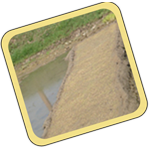
|
Nursery bed preparation
- The area should have an assured water supply and an efficient drainage system.
- It should be dry ploughed twice and apply 1tonne of FYM or compost to 20cents nursery.
- Later, it should be irrigated and allowed to be wet for another two days.
- Afterwards it should be puddled twice and the puddling may be repeated after a gap of one week.
- Basal application of DAP 40kg is recommended when the seedlings are to be pulled out in 20-25 days after sowing in less fertile nursery soils, and if not readily available, apply straight fertilizers 16kg of urea and 120kg of super phosphate.
- After levelling and final puddling, beds of convenient length (8-10 m) with width of 2.5 m are to be made, leaving 30 - 50 cm channels in between two beds.
- Sow the sprouted seeds uniformly on the seedbed.
|
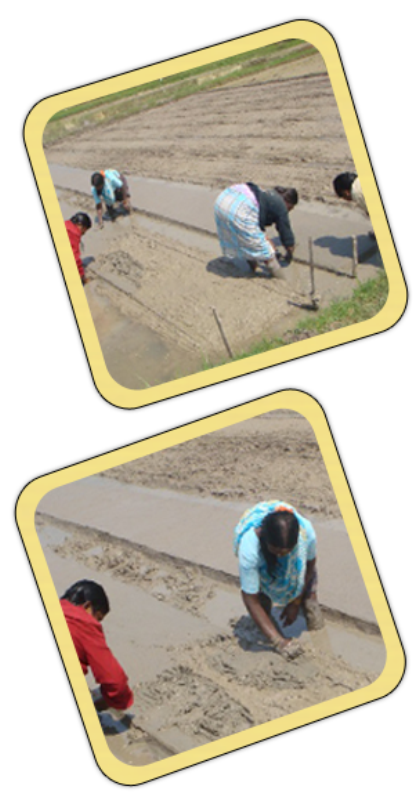 |
| Top |
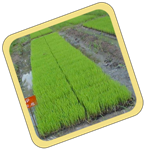
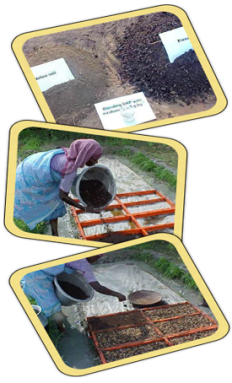
|
Dapog / Mat Nursery |
In Mat nursery seedlings are established in a layer of soil mix, arranged on a firm surface (Concrete floor/ polythene sheet/ seedling trays). Seedlings are ready for planting within 14-20 days after seeding (DAS).
Nursery area
Required nursery area is 100 m2 / ha (or) 2.5 cent / ha – 1cent / acre
Nursery bed preparation
Select a level area near the water source with efficient drainage system. The surface should be covered with banana leaves with the mid-rib removed or polyethylene sheets or any flexible material or cemented floors to prevent seedling roots from penetrating to the bottom soil layer.
a. Preparation of soil mixture
Four (4) m3 of soil mix is needed for each 100 m2 of nursery. Mix 70% soil + 20% well-decomposed pressmud / bio-gas slurry / FYM + 10% rice hull. Incorporate 1.5kg of powdered di-ammonium phosphate or 2kg 17-17-17 NPK fertilizer with the soil mixture.
b. Filling the soil mixture
Place a wooden frame of 0.5 m long, 1 m wide and 4 cm deep divided into 4 equal segments on the plastic sheet or banana leaves, fill the frame almost to the top with the soil mixture.
c. Pre-germinating the seeds
Soak the seeds for 24 hrs, drain and incubate the soaked seeds for 24 hrs, sow when the seeds sprout and radicle (seed root) grows to 2-3 mm long and cover them with dry soil to a thickness of 5mm. |
| Top |
| Dry Nursery |
|
Nursery area
- Area : 20cents
- This type of nursery is handy in times of delayed receipt of canal water or areas where sufficient water is not available.
Nursery bed preparation
- The field is dry ploughed 5-6 times to acquire the fine tilth.
- Nursery area with sand and loamy soil status is more suitable for this type of nursery.
- Plots of 1 to 1.5 m bed width and channels may be formed. Length may be according to the slope and soil.
- After preparing the beds they are to be wetted and 1 tonne of FYM, 2.5 kg of P2O5 and 2 kg of potash need to be applied.
- Sowing may be dry seeding. Seeds may be covered with sand and finely powdered farm yard manure.
|
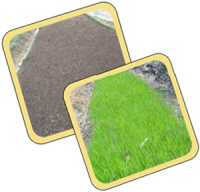 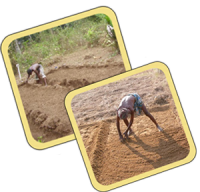 |
| |
Top |
Seed Rate, Quality and Treatment
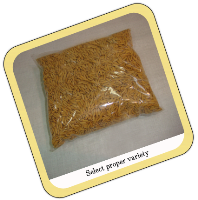
|
Seed Rate |
SRI method - 7-8 kg/ha (for all varieties and hybrids)
Conventional method
- 30 kg for long duration varieties
- 40 kg for medium duration varieties
- 60 kg for short duration varieties
- 20 kg for Hybrids
|
| Top |
| Seed Quality |
|
- Healthy and vigorous seedlings are the bases for better crop growth and yield.
- Vigorous seedlings produced in the nursery will be able to withstand pest attack in the main field.
Seeds intended for sowing should satisfy the following requirements :
- The seed should belong to the proper variety, which is proposed to be grown.
- The seed should be clean and free from mixtures of other seeds.
- The seed should be mature, well developed and plump in size.
- The seed should be free from obvious signs of age or bad storage
- The seed should have a high germinating capacity.
Before sowing, the seed should be treated with fungicides which protects the seed against soil-born fungi and also give a boost to the seedlings.
Upgradation of seed quality using salt solution
- Ten litre of water is taken in a plastic bucket of 15 litre capacity and a good quality fresh egg is dropped in the water and the egg sinks in water and reaches the bottom.
- The commercial grade common salt is added little by little and dissolved in water. As the density of salt solution increases, the egg raise up.
- The addition of salt (Sodium chloride) is stopped when the surface of the egg is visible above the solution.
- To this salt solution add 10kg of seeds.
- The seeds with low density float on the surface of the solution.
- The seeds floating on the surface of the solution are removed.
- The seeds sunk in the solution are washed for 2-3 times in water and then used.
|
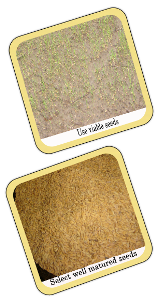 |
| |
Top |

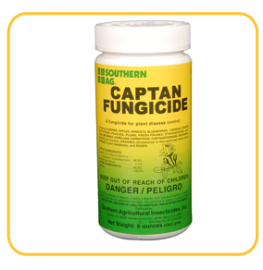
|
Seed Treatment |
Types
- Wet seed treatment
- Dry seed treatment
Wet seed treatment
:
- Treat the seeds in Carbendazim or Pyroquilon or Tricyclozole solution at 2 gm/lit of water for 1 kg of seeds for 10 hrs and drain excess water.
- This wet seed treatment gives protection to the seedlings up to 40 days from seedling disease such as blast. If the seeds are required for sowing immediately, keep the soaked seed in gunny bag in dark room for 24hrs for sprouting.
- Seed treatment with Pseudomonas fluorescens:
Treat the seeds with Pseudomonas fluorescens 10gm/kg and soak in 1 lit of water overnight. Decant the excess water and allow the seeds to sprout for 24 hrs and then sow.
- Seed treatment with Azospirillum:
Three packets (600 g/ha) of Azospirillum and 3 packets (600g/ha) of Phosphobacteria or 6 packets (1200g/ha) of Azophophirillum bioinoculants mixed with sufficient water.
- Biocontrol agents are compatible with biofertilizers, so it can be mixed together for seed soaking. Fungicides and biocontrol agents are incompatible.
Dry seed treatment :
Seed treatment with Fungicide: Mix the seeds with Captan or Thiram 24 hrs before sowing @ 4g/kg of seed. This dry seed treatment gives protection to the seedlings up to 40 days from seedling disease such as blast.
|
| Top |
Management strategies
| Nursery Management Timetable |
Top |
Days |
Operations |
3-5 |
Weed management (if needed) |
10-20 |
Pest / disease management practices |
15 |
Apply DAP 40 kg, if DAP is not applied as basal dose |
25-35 |
- Pulling out the seedlings.
- Short duration (25 days).
- Medium duration (30 days).
- Long duration (35 days).
- SRI (14 Days).
* Apply 20 kg gypsum a day before pulling out of
seedling if soil is heavy clay
|
|
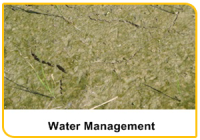
|
Water Mangement |
Wet Method
- Drain the water 18 to 24hrs after sowing
- Allow enough water to saturate the soil from 3rd to 5th day. From 5th day onwards, increase the water depth to 1.5cm depending on the height of the seedlings.
- Thereafter maintain 2.5cm depth of water.
Mat Nursery Method
- Water the nursery with rose can as and when needed (twice or thrice a day) to keep the soil moist.
- At 6 DAS, maintain thin film of water all round the seedling mats.
Dry method
|
| Top |
| Nutrient Management |
|
Wet method
- If seedlings are to be pulled out after 25 days, application of DAP is to be done 10 days prior to pulling.
- 4kg of gypsum and 1kg of DAP per cent can be applied for clay soil on 10th day after sowing.
Mat nursery method
Though the temperature and water are adequate, the seedlings show yellowing
(N deficiency). Sprinkle seedlings with 0.5% urea (1.5 kg Urea in 300 l water/100 m2).
|
 |
| |
Top |
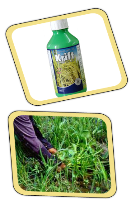
|
Weed Management |
Apply pre-emergence herbicides viz., Pretilachlor + safener @ 0.3kg/ha, on 3rd or 4th day after sowing to control weeds in the lowland nursery. Grown up weeds may be removed by manually.
|
| |
Top |
| Pest Management |
|
Nursery pest :
1. Army worm (Spodoptera mauritia)
2. Thrips (Stenchaetothrips biformis)
3. Green leafhopper (Nephotettix nigropictus, N. cincticeps, N. virescens)
4. Caseworm (Nymphula depunctalis) |
|
Army worm (Spodoptera mauritia)
Symptom of damage
- Larvae cut the seedlings in large scale
- Severe infestation - cattle grazing appearance to the field.
- They feed gregariously and march from field to field.
|
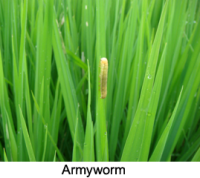 |
Nature of damage
- Caterpillars march in large numbers in the evening hours and feed on the leaves of paddy seedlings till the morning and hide during daytime.
- They feed gregariously and after feeding the plants in one field march onto the next field. Under severe infestation crop gives the grazed appearance.
- Attacked plants are reduced to stumps. Nurseries situated in ill-drained marshy areas attacked earlier than dry ground.
- Damage is severe during July to September.
|
 |
Identification of insect pest
- Egg: Eggs are spherical and creamy in colour, which are laid in a group covered over with grey hairs.
- Larva: The caterpillars are light green with yellowish white lateral and dorsal stripes in the early stage and later become dark brown or grayish green in colour with a crescent (Semi-circular) shaped black spot on the side of each segment.
- Pupa: They pupate inside the soil in earthen cocoons. Pupa is dark brown and measures 16 -17mm long.
- Adult: The adult moth is medium sized, stout built dark brown with a conspicuous triangular black spot on the forewings. Hind wings are brownish white with thin black margins.
|
 |
Management strategies
Cultural control
- Flood the nursery to expose the hiding larvae to the surface and thus they are picked up by birds.
- Apply kerosene to water to suffocate and kill the larvae.
- Allow the ducks into the field to feed the larvae.
Chemical control:
- Drain the water from the nursery and spray chlorpyriphos 20 EC 80 ml
|
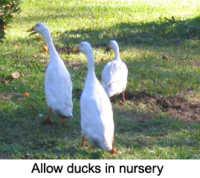 |
|
| Top |
Thrips (Stenchaetothrips biformis)
Symptom of damage
- The crop is highly susceptible in the nursery stage for the first 23-25 days after transplanting/sowing.
- The tips of leaves get rolled longitudinally into needle like outgrowths and turn whitish.
- In severe cases, the lower leaves also turn yellowish.
- The infestation may be rated as mild, if there is less than three needle like leaves and as severe, if there are more than three outgrowths with the lower leaves also showing chlorosis and scorching.
- The infestation invariably disappears after sharp showers.
|
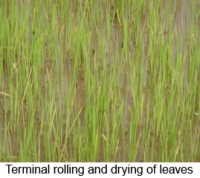 |
Nature of damage:
Both the adults and nymphs lacerate the tender leaves and suck up the plant sap. As a result fine yellowish lines or silvery streaks are seen on the leaves. Later, the leaves curl longitudinally and begin to dry from the tip downwards. In sever cases, the entire nursery may dry up and fail to produce seedling. Sometimes transplanted crop is also affected in the early stages.
|
 |
Life stages
- Egg: Eggs laid singly in the tissues of the tender leaves on the sides facing the stem. Eggs are hyaline and turn pale yellow as they mature.
- Nymph: Newly hatched nymphs are transparent but turn yellowish white after the first moult and possess darker legs, head and antennae.
- Pupa: Pupation takes place inside the rolled leaves and appendages and wings are clearly visible.
- Adult: Adult is 1mm long, dark brown to black in colour with fringed wings. Male is smaller, more slender than female. It reproduces partheno-genetically since males are seldom seen in the population.
|
 |
Management strategies
Cultural control
- Submerge infested crops intermittently for 1-2 days.
- Drag a wet cloth on the seedlings.
Chemical control
Biological control
- Predatory thrips, coccinellid beetles, anthocorid bugs, and staphylinid beetles are biological control agents that feed on both the larvae and adults.
|
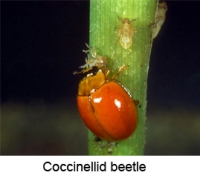 |
 |
|
| Top |
Green leafhopper (Nephotettix nigropictus, N. cincticeps, N. virescens)
Symptom of damage
- Yellowing of leaves from tip to downwards.
- Vector for the diseases viz., Rice tungro virus, rice yellow & transitory yellowing.
|
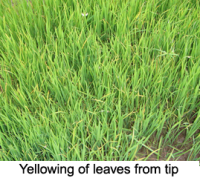 |
Nature of damage
Both nymphs and adults suck the plant sap from the leaf and leaf sheath.
Mild infestation reduces the vigour of the plant and the number of reproductive tillers. Heavy infestation causes withering and complete drying of the crop. Plants are predisposed to fungal and bacterial infection through feeding and ovipositional punctures. . It also transmits plant diseases such as dwarf, transitory yellowing, yellow dwarf and rice tungro virus (Tungro is transmitted during short feeding period). |
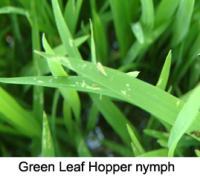 |
Life stages
- Egg: Greenish transparent eggs are deposited in the midrib of leaf blade or sheath of rice or green grass. They are laid in batches of 10 to 15 arranged in a single row.
- Nymph: The nymphs are soft bodied, yellow white in colour. Gradually the colour changes to green with five nymphal instars and become adults in 18-20 days.
- Adult: Adults are 3-5 mm long, bright green with variable black markings, wedge shaped with a characteristic diagonal movement. Male insect has a black spot in middle of the forewings that is absent in females. The insect is active during July to September.
- Longevity: Females live for 50-55 days.
|
 |
Management strategies :
Cultural control
- Use resistant varieties like IR 50, CR 1009, Co 46, PTB 2 and PTB 18. Nursery should not be raised near the lamp posts.
- Apply neem cake @ 12.5 Kg/20 cent nursery as basal dose.
|
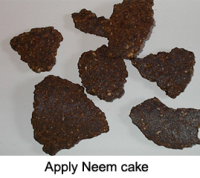 |
Chemical control
|
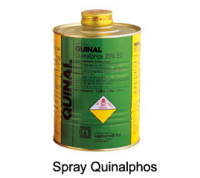 |
|
| Top |
Rice Caseworm (Case Worm, Nymphula depunctalis (Guen.), Pyraustidae, Lepidoptera)
Symptom of damage
- Caterpillars feed on green tissues of the leaves and leave become whitish papery.
- Tubular cases around the tillers by cutting the apical portion of leaves.
- Floating of tubular cases on the water.
|
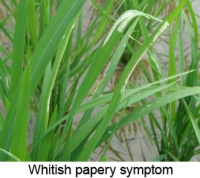 |
Nature of damage
The caterpillar cuts a piece of leaf roll it longitudinally into a tubular structure and remains inside. It feeds by scraping the green tissue of the leaf. The cases often float in the water. |
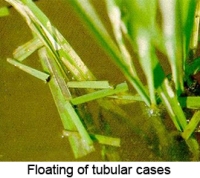 |
Identification of insect pest
- Egg: Eggs are light yellow, disc like, smooth and irregular in shape. They are laid on the underside of the leaves floating on the water.
- Larva: Pale translucent green with orange head. It has filamentous gills on the sides of the body that helps to lead a semi aquatic life
- Pupa: It pupates inside the leaf case. Fresh pupae are milky white, which gradually turn to light yellow.
- Adult: Moth is delicate white moth with pale brown wavy markings. The adult is a small delicate moth having white wings speckled with pale brown wavy markings. Females are larger than males. Egg laying takes place in the night.
|
 |
Management strategies
Cultural control
- Mix 250 ml of kerosene to the standing water
- Dislodge the cases by passing a rope and drain water
- Collect the cases and destroy
|
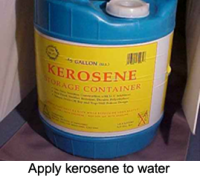 |
Chemical control
- Spray any one of the following herbicide : Quinalphos 25 EC 80 ml.
|
 |
|
| Top |
|
Diseases Mangement |
Nursery Diseases :
- Blast - Pyricularia oryzea
- Brown spot - Drechslera oryzae (Cochliobolus miyabean)
- Rice Tungro virus disease
(i)Rice tungro Bacilliform virus
(ii) Rice tungro Spherical virus
|
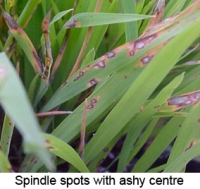 |
Rice blast (Pyricularia oryzea)
Symptom of damage
- Disease can infect paddy at all growth stages and all aerial parts of plant (Leaf, neck and node).
- Small specks originate on leaves - subsequently enlarge into spindle shaped spots(0.5 to 1.5cm length, 0.3 to 0.5cm width) with ashy center.
- Several spots coalesce and form big irregular patches
|
 |
Management Strategies
- Avoid excess N - fertilizer application
- Use of tolerant varieties ( Palghuna, Swarnamukhi, Swathi, Prabhat, Co 47,
IR - 64, IR - 36, Jaya)
- Dry seed treatment with Pseudomonas fluorescens talc formulation @10g/kg of seed.
- Stagnate water to a depth of 2.5 cm in the nursery. Sprinkle 2.5 kg of P. fluorescens (talc) and mix with stagnated water. Soak the root system of seedlings for 30 min and transplant.
- Seed treatment at 2.0 g/kg seed with Captan or Carbendazim or Thiram or Tricyclazole.
- Spraying of Tricyclazole at 1g/lit of water or Edifenphos at 1 ml/lit of water or Carbendazim at 1.0 gm/lit.
|
|
| Top |
 |
Brown Spot : Helminthosporium oryzae
Also called as sesame leaf spot (or) Helminthosporiose (or ) fungal blight
Symptoms
- Occur in nursery as well as main field
- Causes blight of seedlings
- Isolated brown, round to oval (resemble sesame seed) spots and coalesce to form large patches.
- 50% yield reduction in severe cases
|
 |
Management
- Use of tolerant varieties (Co 20, IR – 24 and Padma) and disease free seeds.
- Seed soak / treatment with Captan or Thiram at 2.0g /kg of seed.
- Spray Mancozeb (2.0g/lit)
|
|
| Top |
| |
Rice Tungro virus disease
(i)Rice tungro Bacilliform virus
(ii) Rice tungro Spherical virus
Vector : Green leaf hopper
|
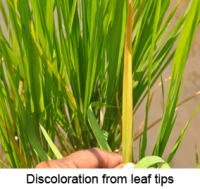 |
Symptoms
- Plants affected by tungro exhibit stunting and reduced tillering.
- Their leaves become yellow or orange-yellow, may also have rust-colored spots.
- Discoloration begins from leaf tip and extends down to the blade or the lower leaf portion
|
 |
Management Strategies
- Set up light traps to monitoring and attract vectors.
- Leaf yellowing can be minimized by spraying 2% urea mixed with Mancozeb at 2.5 gm/lit.
- Grow tolerant varieties are Co 45, Co 48, Surekha, Vikramarya, Bharani, IR 36.
- In nursery when virus infection is low, apply Carbofuran granules @ 1 kg a.i./ha to control vector population.
|
| |
Top |
|






































